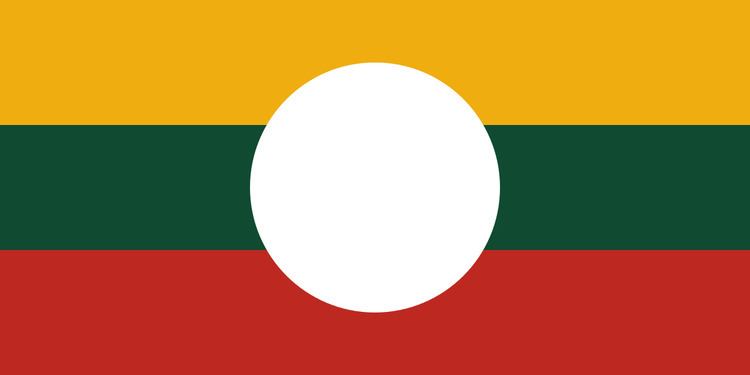Country Burma Population 126,143 Elevation 838 m | Time zone MST (UTC+6:30) Area 1,265 km² | |
 | ||
Nawnghkio Township is a township of Kyaukme District in the Shan State of eastern Burma. The principal town and administrative seat is Nawnghkio. The name 'Nawnghkio' was started to call after a camp near a green lake (Shan language: nawng = lake or natural pond, hkio = green). The lake is located in the west of 'Haw Taw Monastery' of today's Nawnghkio.
Contents
Geography
The township lies between 22° 45' and 23° 15' north latitude and 96° 00' and 97° 00' east longitude. Altitude ranges from 700 feet above the sea level in the lowest to 4300 feet in the highest with an average of 2750 feet. Occupying nearly half of the center of the land is highly productive plane surrounded by mountains in north, east, south and west. Mountains of the southern region are the highest. More than half of the surface area is covered by rain forests. Average number of raining days range from 90 to 130 days per year and annual rail fall varies from 47 to 70 inches. Thunder storms struck the area in the rainy season (May to October). Being in the temperate zone, the temperature varies from 43°-81 °F in the cold season to 61°-96 °F in the hot season. Many small rivers and streams are running across the township throughout the year forming, in some places, beautiful waterfalls. Inn Wine waterfall, Namngo waterfall, Inn Hpo waterfall, Chaunggyi Yay Pyan Taung waterfall and Thabyedoe waterfalls are famous. A hot water spring can be seen near Seik Hpu village. Thirty small dams are constructed for irrigation. Small scale hydroelectric power is used in many places.
Borders
Nawnghkio Township is bordered by:
Towns and villages
Thonze town is the administrative seat of the township in the past. On 28/April/1899, at the same time the Goteik viaduct (bridge) was started to be built across the Gokteik gorge near Nawnghkio, the seat moved to Nawnghkio. On 10/August/1961, Nawnghkio Farm Council was founded. According to official announcement letter from the Ministry of Internal Affairs dated 21/June/1972, Nawnghkio Township was organized with the following 6 wards and 35 village tracts of 249 villages:
Geology
Myanmar’s biggest earthquake, measuring 8.2 on the Richter scale, took place in 1912 along the Kyauk Kyan Fault in northern Shan State, another of the country’s main faults (the first is the Sagaing Fault and the third is the Rakhine Fault). Kyaukkyan fault is one of the prominent seismotectonic feature (Lat. 22˚ 18´N – Long. 96˚ 44´E). The large earthquake of 23 May 1912 (8.0 RM) with many foreshocks and aftershocks, seems to be associated with that fault. It runs nearly north-south direction. Kyauk Kyan fault is 800 kilometres long, stretching from Shan State to southern Kayah State.
Ethnic Groups, Language and Religion
Major ethnic groups are Shan and Danu which make more than 80% of township population. Other ethnic groups are Bamar, Gurkha, Indian, Kachin, Chin, Karen, Rakhine, Palaung, Lahu, Kokant, Chinese and Kayah. Myanmar is the official language and is used by most of the population. Shan is another commonest language in use. Buddhism is the main religion (97%). Christian, Hindu and Muslim are less common religions. About one-third (33%) total township population are under 18 years of age.
